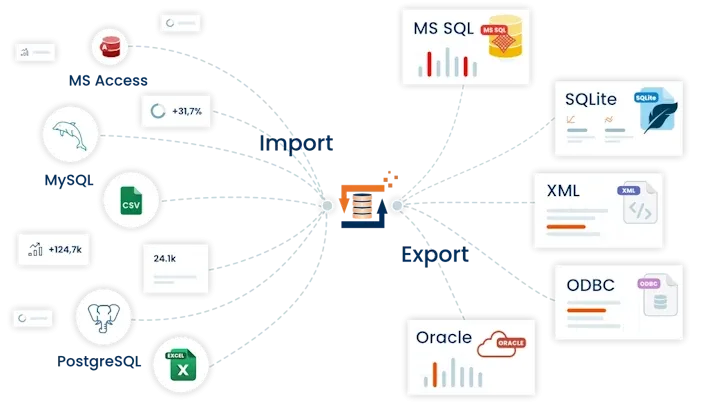- Posts: 5
Can I do this?
- Alan Sawyer
- Topic Author
- Offline
- User
-

Less
More
3 years 9 months ago #3666
by Alan Sawyer
Can I do this? was created by Alan Sawyer
I have a mysql connection setup as Read and a SQL Server setup as Write.
I have changed the timeout on both to 0.
By using SQL command and at start, I run a mysql stored procedure, via call xxxxxx. That process takes about 40 minutes to run. I am not sure it's finishing but it might be.
I also have another SQL command with Start that runs a truncate table on the SQL Server using the Write option. I believe that works.
Then the normal per record process should run which should copy a table that's in mysql to sql server. This table should have been loaded in the first start command above.
Then I have a SQL command with Finished that runs an update statement on sql server (write).
I am expecting the mysql stored procedure to run, and the sql server truncate (don't care which one runs first), then the normal processing which copies records to sql server,and then the final process which should update some records in sql server using the data that was copied from mysql to sql server.
Should that work??
If so, Is there a clean way to trap errors, etc, and make sure all 4 steps work properly?
Thanks for any help anyone is willing to give.
Alan
I have changed the timeout on both to 0.
By using SQL command and at start, I run a mysql stored procedure, via call xxxxxx. That process takes about 40 minutes to run. I am not sure it's finishing but it might be.
I also have another SQL command with Start that runs a truncate table on the SQL Server using the Write option. I believe that works.
Then the normal per record process should run which should copy a table that's in mysql to sql server. This table should have been loaded in the first start command above.
Then I have a SQL command with Finished that runs an update statement on sql server (write).
I am expecting the mysql stored procedure to run, and the sql server truncate (don't care which one runs first), then the normal processing which copies records to sql server,and then the final process which should update some records in sql server using the data that was copied from mysql to sql server.
Should that work??
If so, Is there a clean way to trap errors, etc, and make sure all 4 steps work properly?
Thanks for any help anyone is willing to give.
Alan
Please Log in or Create an account to join the conversation.
- FlowHeater-Team
-

- Offline
- Admin
-

Less
More
- Posts: 447
3 years 9 months ago #3667
by FlowHeater-Team
Best wishes
Robert Stark
Replied by FlowHeater-Team on topic Can I do this?
Hi Alan,
In my opinion it should work within one processing step. I don’t know how many records are in your table you want to delete/truncate. In case this is as small amount e.g. less than 100.000 you can use also “DELETE FROM” instead of “TRUNCATE TABLE”. In this case all steps are covered into a big database transaction. This means in case of an error everything would be rollback automatically.
The common processing order is:
A much better way is to use the FlowHeater Server to execute your definition. Here you can send emails notifications in case of errors/warnings including the current output.
In my opinion it should work within one processing step. I don’t know how many records are in your table you want to delete/truncate. In case this is as small amount e.g. less than 100.000 you can use also “DELETE FROM” instead of “TRUNCATE TABLE”. In this case all steps are covered into a big database transaction. This means in case of an error everything would be rollback automatically.
The common processing order is:
- Execute the defined START functions (Heater)
- Initialize the READ Side, run also defined connection based SQL Statements into the Adapter
- Initialize the WRITE Side, run also defined connection based SQL Statements into the Adapter
- If configured, empty the table, using delete or truncate depends on you setting
- Run Each Row defined functions (Heater)
- Execute the defined END functions (Heater)
A much better way is to use the FlowHeater Server to execute your definition. Here you can send emails notifications in case of errors/warnings including the current output.
Best wishes
Robert Stark
Please Log in or Create an account to join the conversation.
Time to create page: 0.272 seconds

